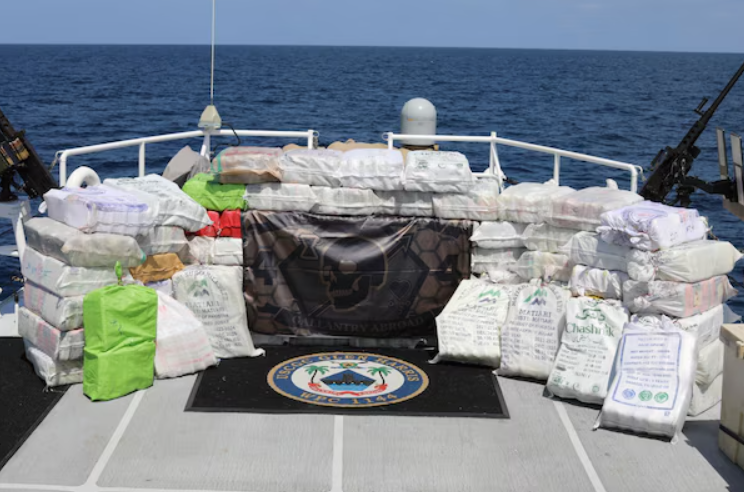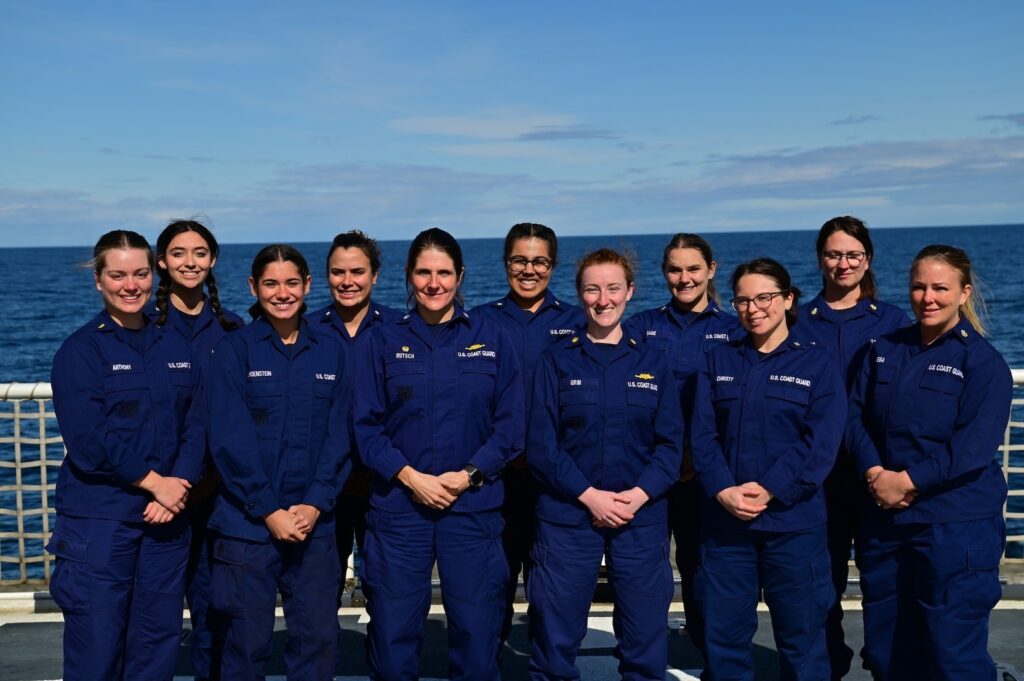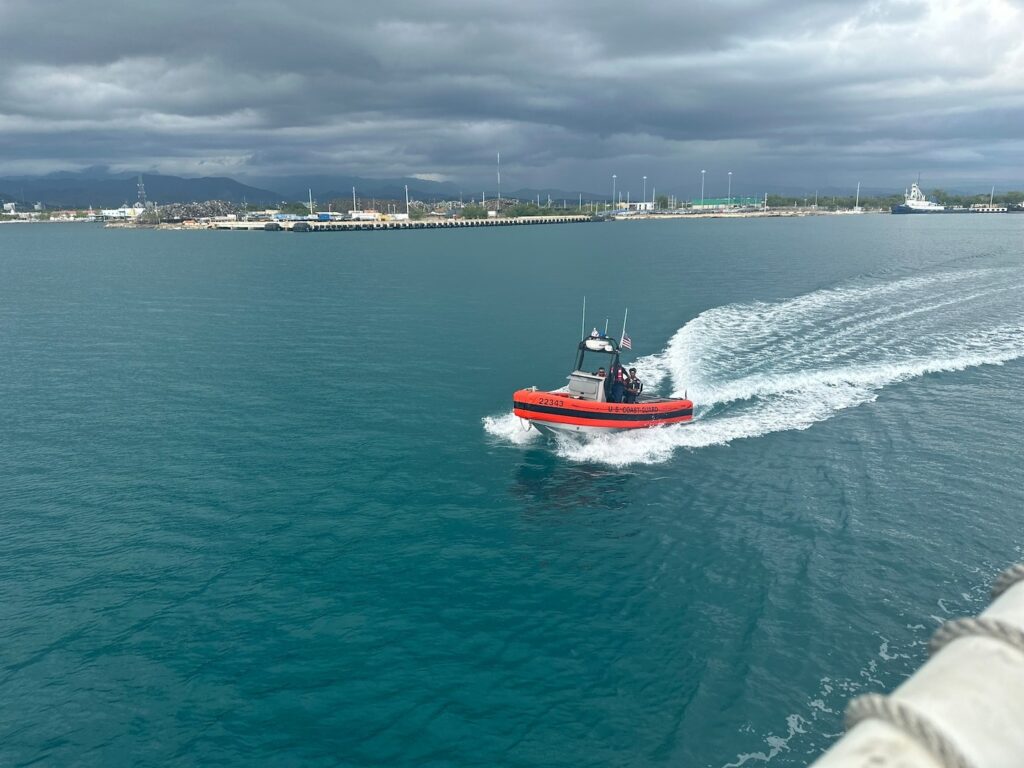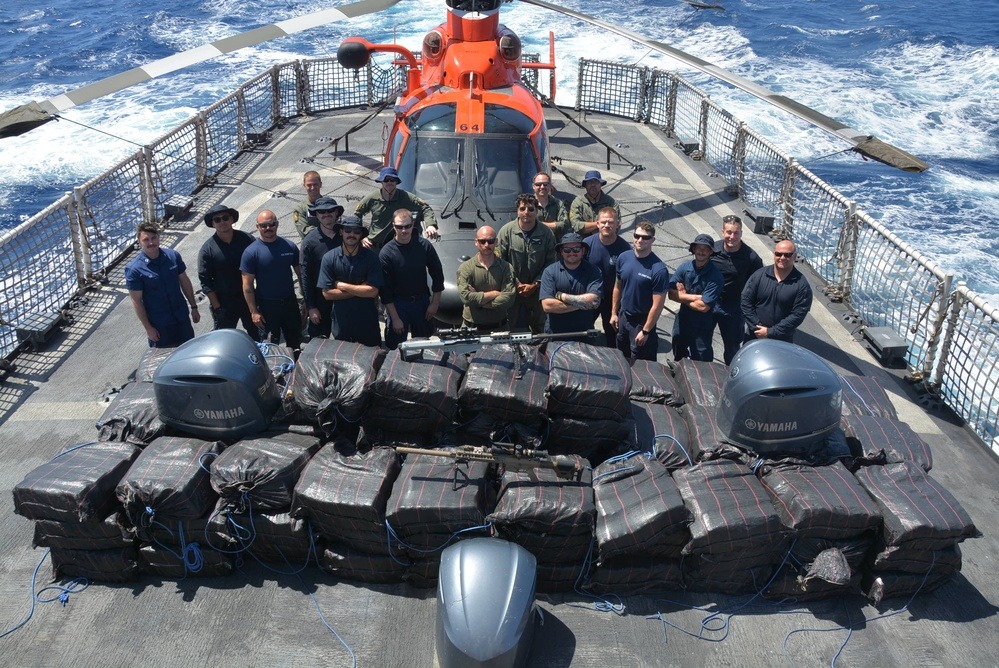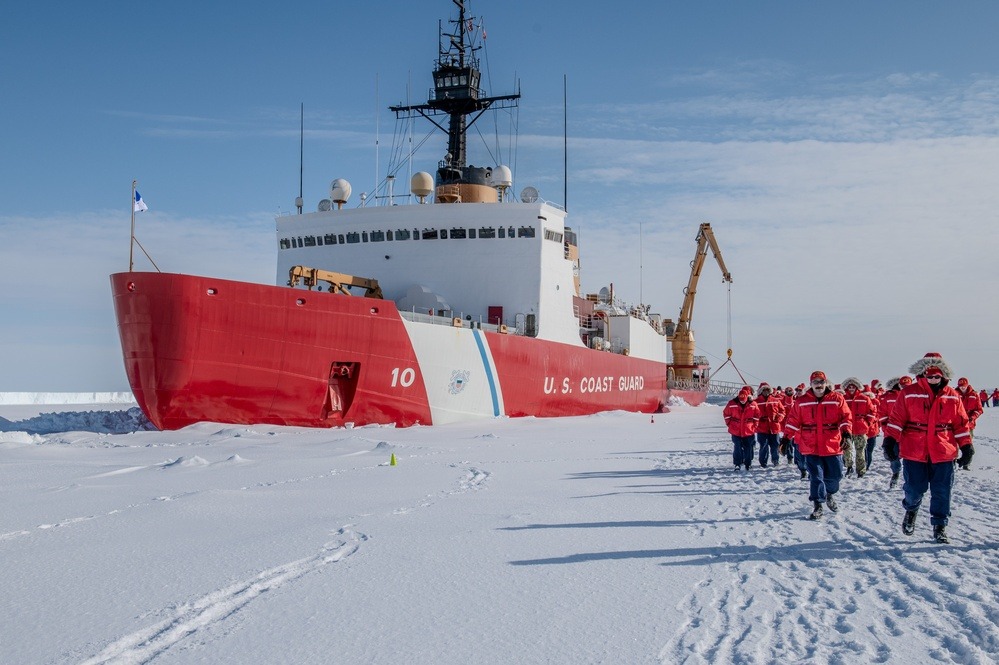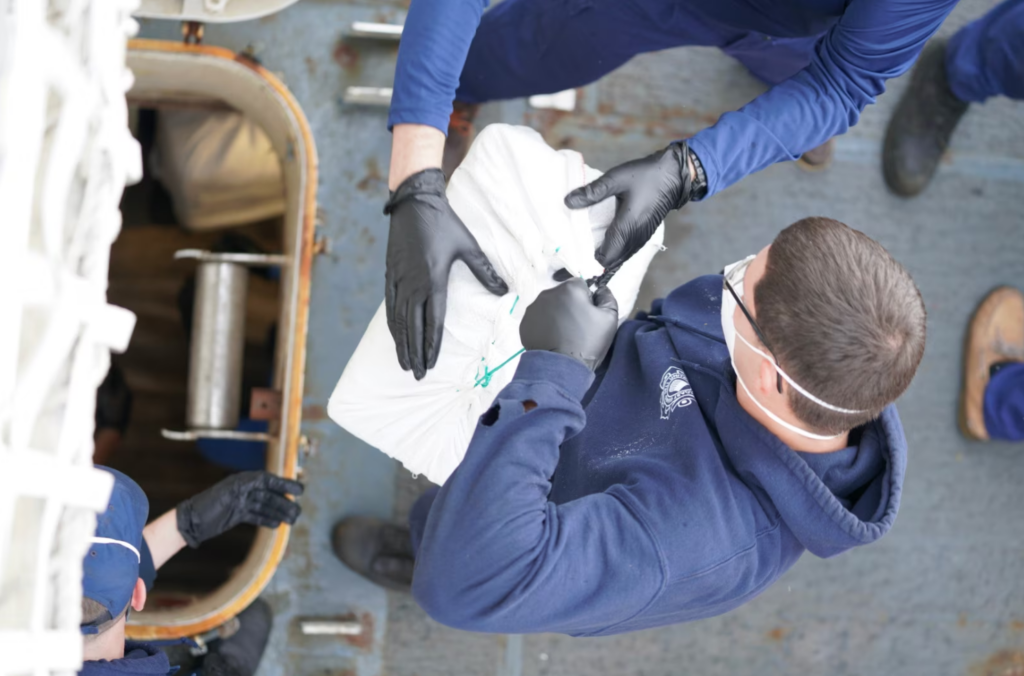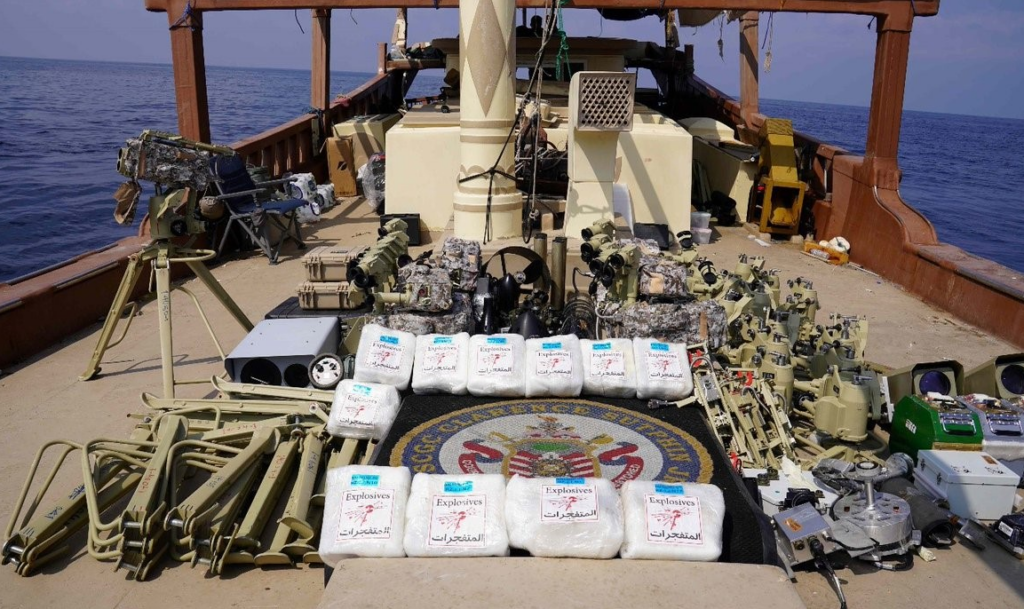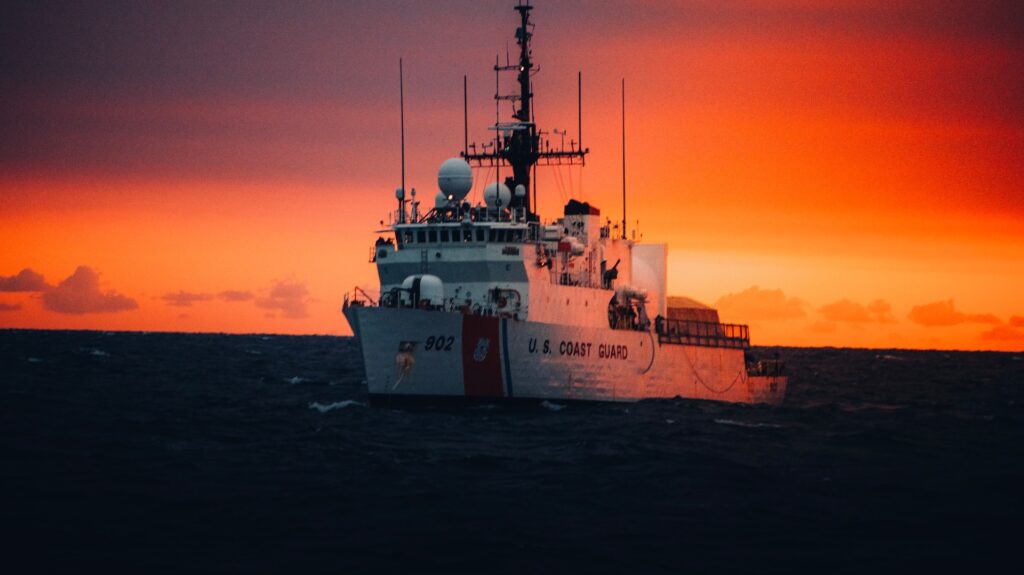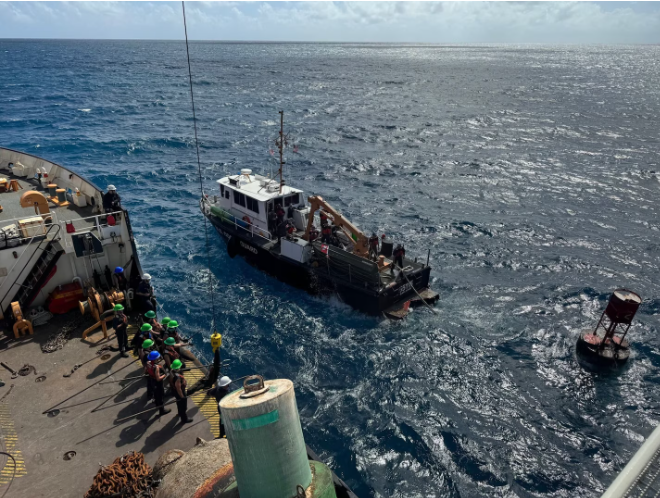French Air Force crew trains at U.S. Coast Guard Air Station Barbers Point
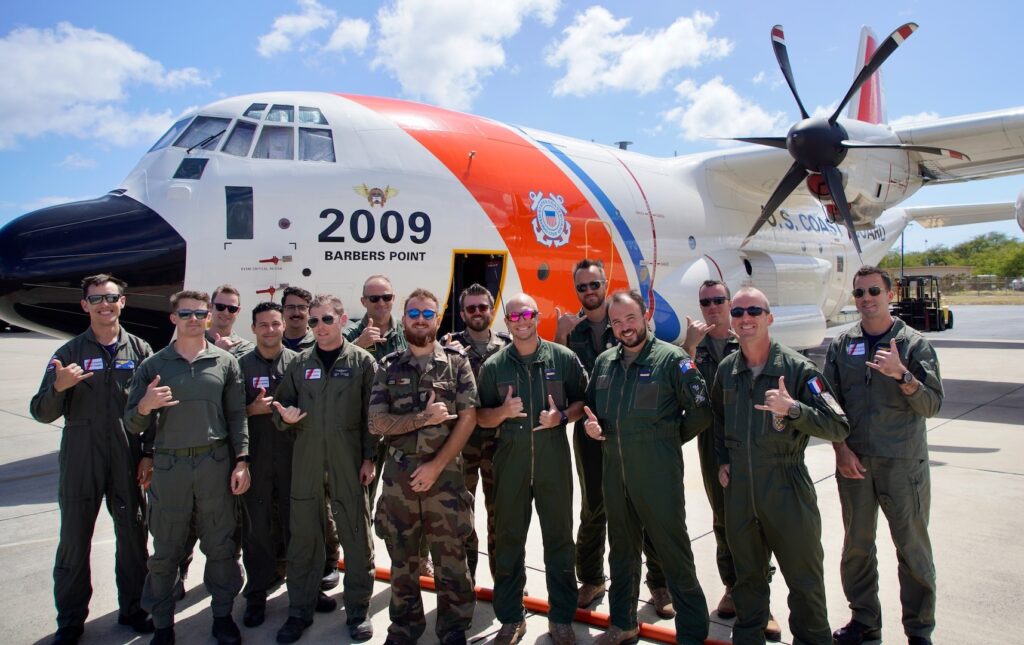
U.S. Coast Guard 14th District, March 11, 2024
HONOLULU – A crew from the French Air Force arrived at Air Station Barbers Point on March 4, 2024, for a week-long subject matter exchange with U.S. Coast Guard aircrews.
The seven-member team, comprised of three pilots and four crew members, is stationed in French Polynesia, Tahiti, and flies a CN235 Casa aircraft; during their visit, they participated in various activities designed to enhance their aviation proficiency and build professional relationships with their Coast Guard counterparts.
On March 6, Commander Victor Yaguchi of Air Station Barbers Point provided the French aircrew with an in-depth briefing on Coast Guard aircraft missions. This included an overview of Air Station Barbers Point airframes, capabilities, and mission sets. The briefing served as a foundation for the crew’s training experiences throughout the week.
“This visit is a valuable opportunity to collaborate with our French allies and share best practices in aviation operations,” said Captain Maurice Murphy, Commanding Officer of Air Station Barbers Point. “The partnerships in the Pacific are invaluable, we work closely with our French Allies and Joint Rescue Coordination Center Tahiti to rescue mariners at sea.”
The French crew utilized the air station as their base of operations for the week and conducted flights throughout the Hawaiian Island chain. This exposure to a complex and busy airspace allowed them to refine their communication procedures and flight skills. They specifically focused on:
Air-to-Air and Air-to-Ground Communications: The crew honed their ability to communicate effectively in a congested airspace, a skillset critical for safe operations.
U.S. Flight Rules: The training familiarized the crew with U.S. Federal Aviation Administration (FAA) regulations, ensuring smooth integration into the local airspace.
Coast Guard Search and Rescue Operations: The crew gained insight into the Coast Guard’s B-0 SAR response procedures, a vital capability for ensuring maritime safety in the vast Pacific Ocean.
The Hawaiian Islands provide the closest and busiest airspace to French Polynesia, making Air Station Barbers Point an ideal training location. This reinvigorated exchange program is expected to occur several annually, fostering continued collaboration and professional development between the U.S. Coast Guard and the French Air Force.
Upon arrival, the ASBP staff warmly welcomed the French crew and presented them with traditional kukui nut leis, symbolizing protection and peace. This gesture reflects the spirit of cooperation and mutual respect that underpins this exchange program.
